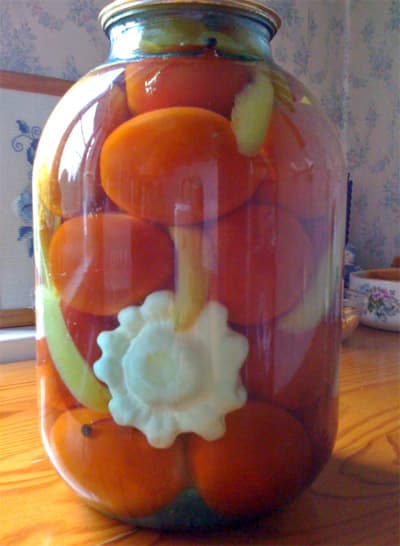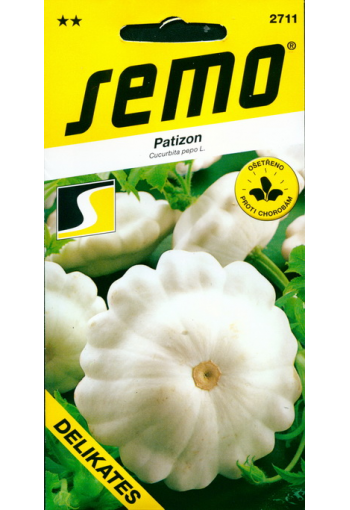Ex Tax: 43.24€
The variety is early ripe (from germination to the beginning of fruiting 50-70 days). Bush plant. The fruit is disc-shaped with serrated edges, white, 4-5 cm in diameter.
The pulp is white, juicy. Productivity 2.0 - 3.2 kg / m2.
Agrotechnics.
Patisson is grown on light soils, where potatoes, cabbage, onions, and legumes grew in the previous year.
Before sowing, the seeds are treated in a solution of potassium permanganate, then washed with clean water.
Sowing in open ground and film shelters is carried out approximately in May, when the soil warms up to a depth of 8-10 cm to + 13 + 14 ° С, according to the scheme - 100 x 70 cm.
Seeds are sown in holes, 2-3 pcs. to a depth of 5-6 cm.
After emergence, weak plants must be removed.
The seedling method of growing is also used: in this case, seedlings with 2-3 true leaves are planted after preliminary hardening (one per hole), after the threat of frost has passed.
Further care consists in regular loosening, weeding, watering and feeding. With regular collection of fruits, the plants bear fruit until the first frost.
1 gram = 11-14 seeds.

Eng.: Fruticose squash, Scallop squash, Patisson. Suom.: Kiekkokurpitsa. Sven.: Pattypan squash, Pätisson. Bot.: Cucurbita pepo L. var. melopepo
Cleaning of vegetable crops.
* Fresh squash at any stage of maturity is not suitable for long-term storage. They need to be recycled.
* To harvest the pumpkin, pick a fine day (it is cut off with a stalk and ripened in a dry warm place or in the sun for 2-3 weeks). For long-term storage, only those fruits are laid, the peel of which is not cut with a fingernail. The same is done with the fruits of zucchini.
* Watermelons are harvested only at the stage of full maturity, since they are not ripened during the laying process.
* Melons can be harvested unripe. During storage, they ripen and emit a characteristic melon smell.
* Beets are the first to be removed from root crops, as they freeze even when freezing at -2 ° C. If the beets are not yet ripe, then before the first freezing it and other roots can be covered with earth.
It is impossible to postpone the harvesting of beets until later dates, since when overexposed in the ground, the roots become coarse, cracked and damaged by mice.
When trimming the tops, it is advisable to leave the petioles 0.5 cm long and remove the growth points so that the roots do not germinate during storage. The tail cannot be cut off - a lot of juice flows out of the inflicted wound and the root crop decays.
* Carrots for storage are usually sown in late May - early June and harvested as late as possible, since in autumn days it accumulates essential nutrients and vitamins. But it is also impossible to postpone harvesting until the latest dates, since in the case of prolonged rains and in damp weather, the roots of early spring planting periods are covered with a thick beard of growing new roots and are unsuitable for long-term storage.
If there is no place to store a large amount of carrot harvest, or for some other reason they did not manage to harvest it, then the root crops can be left in the beds until spring, provided that there are no rodents (mice and rats) in the garden. The tops are cut off and well covered with earth or covered with peat, compost, sawdust, foliage. Top can be covered with pieces of roofing material or foil.











